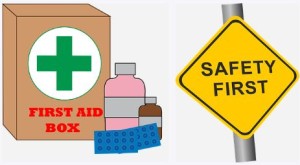Importance of Safety and Compliance Training for Your Teams
November 7, 2019 - 6 minutes read Maintaining a safe church helps you keep people as safe as possible while they are in your care. This refers not only to people’s physical safety but to their emotional, spiritual and even financial safety as well.
Maintaining a safe church helps you keep people as safe as possible while they are in your care. This refers not only to people’s physical safety but to their emotional, spiritual and even financial safety as well.
Developing safe church policies and procedures for your organisation can help make this happen. Communicating the importance of safety and the training of your staff and volunteers are also crucial steps as they help to create a culture of safety – where it (safety) permates throughout the organisation and becomes an embedded part of it.
Developing a safe church policy
This starts with recognising that all people have a right to respect and value and to feel safe. This in turn enables you to commit to people’s safety within all programs, ministries and events.
Practising these principles along with staff training helps to make sure your organisation is meeting its legal and compliance obligations.
We have outlined four key considerations for this below.
1. Essential safety measures
There are several essential safety measures common to churches. These include attending to fire equipment (fire extinguishers, hose-reels, fire blankets), maintaining exit signs, exit doors, emergency lighting and pathways to exits, and the testing and tagging of electrical equipment.
Non-compliance with these requirements can result in fines, or even prosecution or closure in serious cases. Other risks include lawsuits and voiding of insurance in cases of neglect or non-compliance.
For more information on this topic see our previous post on essential safety measures for faith organisations which includes information about the CCI RedBook risk management program.
2. Child safety
Providing a safe environment for children is essential for their protection and safety. This includes committing to safe recruitment (including Working-With-Children and police checks), training of leaders, developing codes of conduct and responding promptly to allegations of harm.
There are ten National Principles for Child Safe Organisations which are outlined in our previous post. More information on how to become a child safe organisation is also available from ChildSafe.
3. Emergency management
All organisations are required to comply with State legislation requirements for emergency planning.
This includes implementing and communicating church safety rules, creating Safety Teams, developing emergency procedures and running regular evacuation drills.
Your Safety Teams should also undergo skills training every six months, which should cover emergency procedures and use of fire extinguishers.
Another matter to consider here is that of applying First Aid. While there isn’t a legal requirement for churches to have their own First Aiders it is recommended.
4. Premises – general housekeeping for better safety
There are several areas to consider here, including ensuring floors are free of slip, trip and fall hazards, keeping steps, stairs and handrails in good repair, safe use of electricity and kitchen hygiene and maintenance.
Another key area to attend to here is roof and gutter maintenance. A well-maintained roofing system is crucial for protecting your building against severe weather events such as windstorm. Poor roof maintenance could also lead to a partial or full denial of insurance in a claim for damage.
Maintaining your grounds and gardens is another area of importance as reduces the risk of accidents occurring to your community members and visitors. This may involve maintaining fences, gates, trees, lawn areas, car parks, children’s play equipment, and ensuring outdoor equipment and furniture is in good repair.
Adequate outside lighting should also be provided after dark to reduce the risk of injuries. This helps to improve the security on your property as well.
Training your teams
There are a few ways you could train your staff and church volunteers to improve your safety and compliance.
1. Undertake our induction training provided free of charge to all CCI members. There are three modules – one each for risk management officers, volunteers and fire wardens.
2. Subscribe to the ChildSafe organisation, which is free of charge to all CCI insured clients. ChildSafe provides training and resources for faith-based and other organisations on all aspects of child safety. This includes transport, water activities, hygiene, food, emergency, protection from abuse and other areas.
3. Send team members on First Aid courses and refreshers. First Aid training can be done through the Red Cross, St John’s Ambulance and other organisations.
As an insured member you can also speak to our team at CCI to assist you in developing solid risk management programs for your church.
For further reading:
CYPP (Commission for Children and Young People) – How to be a child safe organisation.
Written by Tess Oliver
Tags: childsafe, emergency, employees, fire, health & safety, redbook, volunteers
Recent Comments